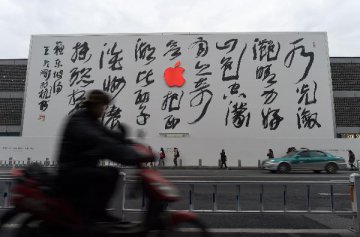
It used to be that U.S. consumers were the world economy’s main engine. Recently, several hundred million new spenders across the Pacific have become a major force too—huge profit drivers for Detroit, Hollywood and nearly every type of consumer-good vendor.
Little wonder that markets have been spooked by the recent worrying signals from Chinese consumers. Apple blamed last week’s revenue-guidance cut on weak Chinese demand. Retail sales in November were up just 8.1% from a year earlier, the weakest growth since 2003. Auto sales have suffered five straight down months. And Chinese consumption-tax revenue has collapsed, down 71% in November.
Luckily, the weak data most likely stem not from a structural collapse, but from a cyclical downturn related to the housing and automobile markets.
The two most frightening numbers—auto sales and consumption-tax revenue—reflect specific policies that have hit demand for cars. Beijing raised automobile taxes at the start of 2018 and has crimped financing for vehicle purchases with a campaign against peer-to-peer lending platforms.
Falling auto sales, in turn, have taken about 2 percentage points off retail-sales growth in recent months, according to analysts at Gavekal Dragonomics. As for consumption-tax revenue, around 95% comes from autos, fuel, tobacco and alcohol, according to Merrill Lynch—which adds that liquor sales remain generally healthy.
For sure, Chinese consumers are in for a rough ride in 2019. The labor market is weakening, with falling new export orders particularly worrying. Lower profits for property-related industries will pressure wages. Weak property sales are damaging demand for white goods like refrigerators.
Those are cyclical trends, however, related to slowing global growth and China’s volatile property market. Beijing has already enacted a big income-tax cut for 2019, and more policy support is likely coming. As long as President Xi Jinping can reach a trade deal with the U.S., a floor for growth in late 2019 or early 2020 seems likely.
The real danger is that Beijing fails to make the overhaul necessary to keep incomes growing over the long run. The “reform” agenda of the past three years has handed power, and financial resources, back to inefficient state companies, starving innovative private-sector companies that drive income growth.
Chinese consumers will keep spending as they grow richer in the years ahead—unless Beijing wrecks the private-sector growth engine. That, not the trade conflict or slumping auto sales, is the real danger on which investors should focus.
Source: The Wall Street Journal



















Latest comments